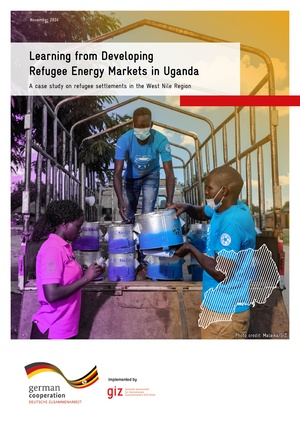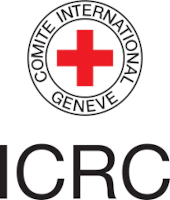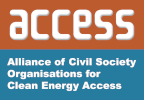Knowledge fuels change
For over a decade, Energypedia has shared free, reliable energy expertise with the world.
We’re now facing a serious funding gap.
Help keep this platform alive — your donation, big or small, truly matters!
Thank you for your support
Learning from Developing Refugee Energy Markets in Uganda
Introduction
Energy is essential to all economic activities and to human well-being with energy services aiding in meeting basic human needs such as food production, provision of shelter and access to health services, as well as contributing to social development by enabling education. Notably, the lack of access to reliable and affordable modern energy is holding back economic and social development in many parts of the world today.
Despite the increasing wide-spread availability of low-cost off grid energy solutions[1] and the heavy investment into the electricity supply industry over the past two decades, Uganda’s access to electricity stands at 57% of which 27% of households (HH) use solar kits for lighting, 11% use solar home systems, and 19% are grid connected[2] owing to the fact that electricity coverage remains at 82% in the urban setting and only 18% in the rural settings and worse within refugee gazetted locations.
GIZ Uganda supports the Government of Uganda to increase utilisation of the country’s untapped renewable resources, meet its energy access and climate targets, and provide access to affordable, modern & reliable energy through the Energy and Climate Programme. The programme activities are carried out under different commissions and in close collaboration with the Ministry of Energy and Mineral Development (MEMD).
SUN-ESDS, EnDev and other development partners in collaboration with MEMD[3] have set out an ambitious vision to facilitate energy access within the humanitarian, development, and peace (HDP) nexus. This vision is guided by the Sustainable Energy Response Plan for Refugees and Host Communities (SERP). The plan enables the alignment and achievement of the objectives set out in Uganda’s Comprehensive Refugee Response Framework (CRRF), National Development Plans and Uganda Vision 2040 with recognition that the energy sector is a major contributor to national development and government revenues, and its performance impacts the performance of other sectors (including refugee livelihoods).
Overview of Market Development Support in Uganda
In Uganda, SUN-ESDS and EnDev, cooperate closely with MEMD, UNHCR, and the Office of the Prime Minister (OPM) to facilitate and improve framework conditions for sustainable energy access and provide access to modern energy services and products (solar photovoltaic (PV) systems and improved cookstoves) to refugees and host communities through market development. This support includes:
- Enabling increased access to energy through the implementation of two private sector led market-based approaches i.e., a results-based financing (RBF) scheme for both improved cookstoves (ICS) and solar PV systems in the West Nile region and Kiryandongo District, and the energy kiosk model within West Nile region only.
- Enhancing service delivery with the provision of reliable and affordable clean renewable energy technologies for social institutions and small businesses. Case in point, the solarisation of six health centres which led to the installation of a business canteen at five health centres to sustainably cover future operation and maintenance costs borne by the solar PV system. Each canteen is managed by its respective Health Unit Management Committee.
This paper focuses on the results and learnings gained through the RBF scheme.
Results-based financing
As a key implementation vehicle to increasing private sector participation in the development of energy poor markets, RBF is a mechanism that is structured to close off market gaps on either the supply side, demand side or both within the market while utilising the effectiveness of targeted financial rewards or incentives (also referred to as subsidies) pegged to pre-determined results. In this case, payments of claims to participating companies under the RBF scheme are made upon verification that results have been delivered. The rationale of the approach is to link financing more directly with outputs and outcomes, rather than inputs and processes. Since October 2020, EnDev and SUN-ESDS have been supporting ICS and solar companies to penetrate the market and sell off grid energy products and services in refugee hosting communities through an RBF scheme with additional support of market awareness. Furthermore, the participating companies were encouraged to establish effective sales/distribution partnerships with already existing GIZ supported energy kiosks in the Imvepi, Rhino Camp, Bidibidi and/or Palorinya Refugee Settlements. The RBF scheme targeting displacement settings had two competitive (public tender) application rounds.
First Round RBF
The first round was structured with top-up incentives aimed at covering a portion of the incremental cost of doing business (especially logistical costs) while entering refugee markets. There were minimum requirements for companies to be able to participate, for instance related to the product’s thermal efficiency, fuel saving ability, warranty, and quality certification. The call to bid was split up for companies selling off-grid solar energy products and those selling ICS. Table 1 on the following page shows how the RBF scheme, and its incentives were structured.
Lessons Learnt from First Round RBF
On the supply side, it was initially hard to attract companies to participate, and once willing companies were found, it took 4-6 months to establish the supply chain closer to the targeted communities. It was especially difficult for some partners to geographically reach refugee communities. Furthermore, some partners did not have a conducive policy to sell to refugees, since customers needed a valid national ID rather than a refugee card for transactions. On the demand side affordability represented one of the major issues. However, in general, the roll out of this first round was also affected by covid restrictions. It became apparent that selling to host communities was more convenient for companies.
| Limitation | Project level support |
|---|---|
| Weak market linkages to close distribution gaps for many energy service companies with distribution hubs located within city centres which remain relatively distant from refugee markets. [supply] | Customised the incentive structure within the second implementation round to build-in slightly higher top-up incentive amounts that incentivised private sector companies to sell even further into core refugee locations. |
| Little or no investment from private sector companies dedicated towards market awareness activities to facilitate product/ brand visibility and product related information such as product use, warranty and repair services within refugee markets. [supply] | Generic market awareness support was given to companies to increase product visibility as well as increase local knowledge on use of energy efficient lighting and cooking technologies. |
| Limited internal capacities of RBF companies (especially cookstove companies) to collect sales data to enable the verification process. [supply] | TA support was provided through training of sales agents on data required to conclude verification processes. |
| Traceability limitations as some solar companies mostly require national IDs rather than refugee cards for a credit/ pay-as-you-go (PAYG) enabled sale. [supply] | Advocacy to include refugee cards or attestation identification details within solar company processes. The local companies adjusted to this quickly or already had it in place, compared to the more international companies. |
| Affordability issues, related to solar powered products, and ICS – preference steered toward lower tiers. [demand] | Market drives helped to understand different payment options offered by companies. |
| Lack of clarity on what type of products exist and where to access them. [demand] | Market drives clearly raised awareness and led to increased sales. |
Second Round RBF
Based on the lessons learned from the first round RBF, the second round was adapted to achieve more sales within the refugee community (higher incentives for sale to a refugee customer) and the geographical target area was increased. The call to bid was as the first split up for companies selling off-grid solar energy products and those selling ICS. The aim was generally set higher (up to 3,800 solar pico and home systems and 10,290 ICS). An end user subsidy was included to address the issues of refugee customers with an affordability gap.
Furthermore, incentives based on gender aspects were integrated to reach more female headed households and increase involvement of women in the distribution chain. Companies that employ at least 30% or 40% female employees in direct distribution or management of the RBF qualified for an additional 10% of the overall incentive earned. Companies that achieved a minimum of 30% sales to female headed households qualified for an additional 10% of the overall incentive earned. For solar companies, one that trained its staff assigned to the execution of this contract in gender related topics qualified for an additional 5% of the overall incentive earned.
Through feedback provided and experiences made by participating companies, the second round also became more structured. If companies can easily comprehend the payment scheme, they are more likely to participate. Fig. 4 is an illustration of the renumeration process which was part of the second call to bid. The payment of incentives is made against evidence per product sold. Bulk sales to third parties for the purpose of free hand-outs to the end users are not considered as accountable for remuneration.These sales records are verified by an independent verifier. Independent verification includes review of documentation of the Partner as well as phone and field verification. Only accountable sales are used for the calculation of the total remuneration.
Lessons Learnt from Second Round RBF
With consideration of the learnings drawn from the participating RBF companies under the first RBF application round, the incentive structure was re-designed and customised to cover the additional costs of transporting targeted technologies further away from city hubs or centres. Therefore, slightly higher supply side or top-up performance incentives were built into the RBF scheme to enable private sector companies to:
- reach further into the refugee settlements by incentivising sales that occurred further away from Arua City with higher amounts.
- geographically expand their market into other refugee settlements that had not been targeted by the earlier RBF round (i.e., Bidibidi, Lobule, Palorinya Refugee Settlements).
Other lessons learnt inculde:
- The subsidy should not be biased as the design of similar subsidy structure must remain the same in similar markets to avoid social cohesion issues between refugee and host communities.
- The affordability gap within certain demographics (e.g., the very poor population) remains very large for a lower subsidy amount to achieve the required energy access.
Recommendations Based on Verification Reports of Second Round RBF
| ICS | Solar |
|---|---|
|
|
- ↑ https://www.gogla.org/from-ideas-to-action-using-end-user-subsidies-to-achieve-universal-energy-access
- ↑ UBOS 2021. National Household Survey data.
- ↑ Info on project and Partners




















